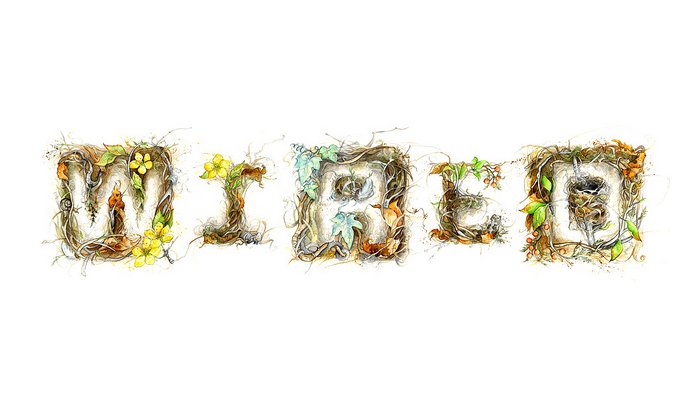 Editor-in-chief Scott Dadich riffs on life and publishing at the edge of the digital bubble.
Editor-in-chief Scott Dadich riffs on life and publishing at the edge of the digital bubble.
Scott Dadich has seen a thing or two.
In his tenure with Wired magazine and parent company Condé Nast, Dadich has personally ridden the roller coaster of publishing through the past decade, including in his current post as Wired’s editor-in-chief.
Dadich spoke recently with WWWD’s Alexandra Steigrad about how the magazine is adapting to the digital world, and where it goes from here. In a nutshell, it’s still a wild ride for magazines looking to adapt to the Web, and media brands like Wired face a whole new set of challenges now.
For starters, web traffic last year for the brand “fluctuated wildly between 9.2 million unique visitors and 25.4 million, for an average of 13 million uniques,” Dadich notes. Combine that with lackluster early results of Apple News usage, which Dadich blames in part on user perceptions, and digital traffic continues to be mercurial.
“If you’re an Android user, Apple News doesn’t enter the equation for you. It’s not even a consideration. [With Apple users] you only get that one chance to surface our stories and those of our peers and friends to that new reader. Do they do a good job of capitalizing on that? I don’t know yet. I wish we had more data,” he notes.
More data or no, the idea of peak content and the looming collapse of the attention economy must figure heavily in future platform decisions. The digital bubble may be set to burst, as Dadich is well aware.
“There’s a saturation point, definitely. The personal outlook of how many phone minutes I spend per day has increased past the point of my liking, for sure. E-mail drives so much of that. I think there are practical limits to how much we can take on. That will take shape in discarding certain platforms or moving deeper behaviors to others,” he tells Steigrad.
One of those all-but-discarded platforms is the iPad, which Dadich credits with helping the publishers understand reader behavior on digital, yet overall disappointed the industry.
“One-third of the output of wired.com stories would be designed with that orientation in mind and with that screen in mind. I got a lot out of it. Wired has benefited from it,” he explains. “A lot of experiments ultimately didn’t move the needle in terms of changing the dynamics of the newsstand or subscription modeling overall,” he says.
Wired is increasingly relying on digital revenues, telling Steigrad that up to 60% of their income comes from online ads. No surprise that their print subscriptions are down by 6.6%; they are giving away the bulk of their content for free, to an audience geared toward using electronic devices for consumption. But as ad blocker usage grows and advertisers realize the massive scope of digital ad fraud, the digital ad revenue stream is clearly set for some major disruption, at the same time that peak content is scheduled to disrupt the model yet again.
How is the brand coping? Earlier this year Wired began offering ad-free reading for a small fee to an audience we can only expect consists of heavy users of ad blockers; no word yet how that stream is building. And he divulged that a content paywall is in development.
“We don’t have plans to launch it yet, but we’re certainly in active modeling, working on the tech that it would require,” Dadich explains. “I think the harder work for us is putting a boundary around the value proposition and the offer to make sure we are exchanging enough value to derive what we want for the subscription fee.”
We expect that this will help print sales too. Readers show an apparent preference to reading magazines in print. And if the online content is tucked behind a paywall, the value proposition of paying for it better be solid indeed. (We’ve seen this before; Last Summer Time Inc. decided they were “no long willing to give its content away for free,” moving away from ad revenues and looking to boost subscription rates. We said at the time that it only makes sense that this tactic will drive more readers toward print.)
Either way, Dadich agrees with Wired’s Creative Director that print is not going away for the brand.
“[The print version is] meaningful in the way that it’s still hard to capture in digital, despite all our experimentation with technology, with moving a story through an audience member’s hands. Digital is lightning-fast. There’s something about slow and a craft,” he notes.
“The fact that a group of creatives can go off and think about and chew through and argue about and design and tell stories, and then come out with that collection, is a really meaningful event. I like what print forces about that,” he continues.
One of the determining factors in editorial decision-making in print is the absolute finiteness of the medium. As Dadich notes, FB is constantly changing algorithms on what’s shown; Apple News and Instant Articles traffic is unpredictable; channels are always falling in and out of favor. These problems just don’t exist in print – for either the publisher or the reader.
In a world poised on the edge of peak content, Dadich and publishers understand what hangs in the balance.
As Dadich notes, “It is cultural and it was written literally on the walls by the founders in 1993 in the original set of heuristics, that risk-taking and trying new things and adopting a willingness to fail were key components of what was defined as ‘Wired-ness.’”
It bodes well for them, and any other publisher, that they are willing to understand that digital was not the savior of publishing but an experiment still under development.
